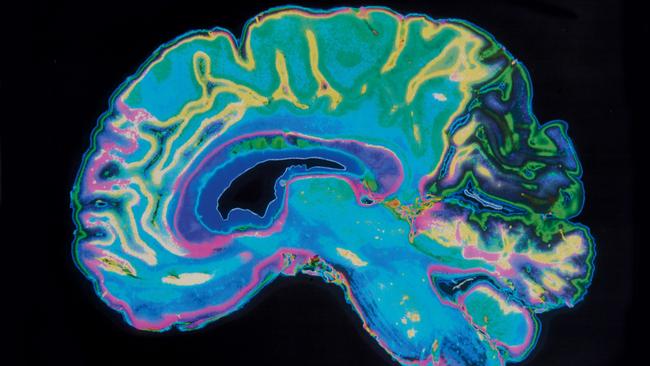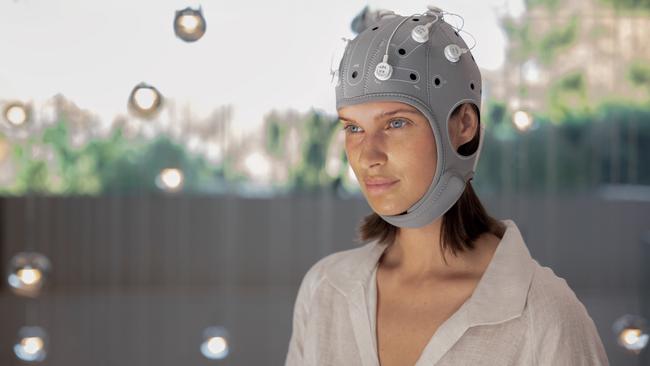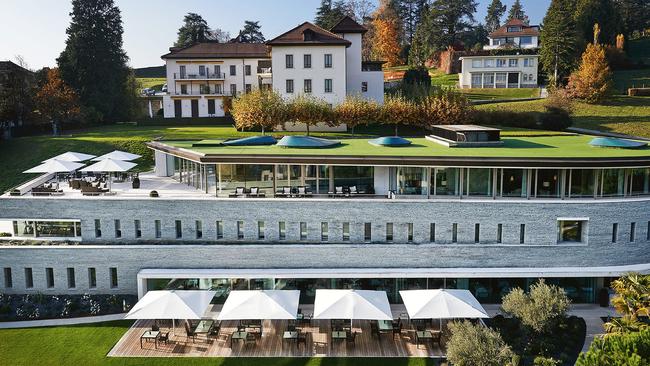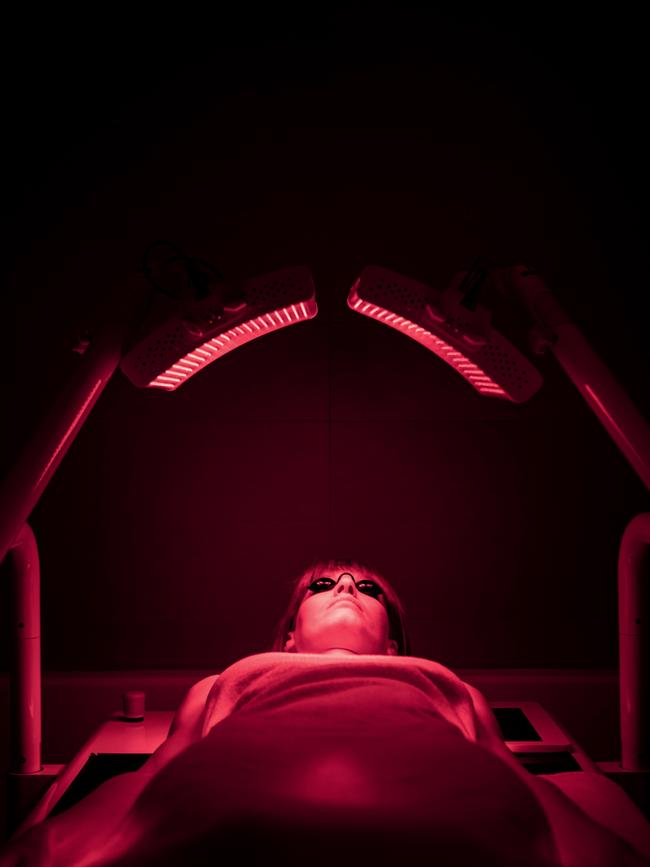These are the smartest ways to beat cognitive decline
The world’s wellbeing focus is now firmly on the control centre as experts weigh in on the latest – and smartest – ways to light up our grey matter and stave off cognitive decline.

Not a day goes by without another news story, device, treatment, supplement, podcast, research paper, statistic – you get the picture – related to the brain. I think it was when the post-covid biohackers got us all revved up about longevity that the previously enigmatic idea of brain health swung into sharp focus. It’s easier to get to grips with lifespan’s more tangible components of sleep, exercise, diet, stress reduction etc. But what’s the point in being 120 years old with rock-hard abs, an impressive sleep score and flourishing microbiome if you can’t recognise your best mate. So all of a sudden the wellbeing world’s attention swivelled upwards; we’re living in the era of the great brain rush.
The first time I had an inkling of what was to come was the day I saw my very own brainwaves projected onto a cinema screen. It was 2019 and I was at the SHA wellness clinic in Spain, having an appointment with head of cognitive development, Professor Bruno Ribeiro. He’d popped a sort of tennis sweatband fitted with probes over my head and after a bit of knob twiddling, suddenly, on the huge screen in SHA’s swanky cinema, there they all were: alpha, beta, theta, gamma and delta showing the activity in my brain as they danced up and down in real time. Professor Ribeiro took a good long look then said gently, “You told me that you’ve been feeling low,” he paused. “But I think you might be more depressed than you think you are.” My stomach lurched and I felt tears sting my eyes. He was right; I’d been covering it up because frankly – what did I have to be depressed about? But there in black and white, were my depleted alpha waves looking sadly back at me.


We scurried back through SHA’s futuristic corridors; everything white, guests in robes, therapists in medical coats, even the flowers are shades of snow. We arrived at Professor Bruno’s office, where from a selection of zany sci-fi-looking helmets and headgear perched on dummy heads, he picked a neoprene cap that he pulled onto my head before pushing metal conductors through some of its holes. Then began my first experience of transcranial magnetic stimulation (TMS), which uses electric fields to stimulate nerve cells in specific parts of the brain. In my case, the frontal cortex.
The professor engaged me in a talking therapy session during the stimulation and it was incredible. After about 10 minutes, suddenly … the world was brighter. Like someone had switched the television from black and white to glorious technicolour. My thoughts felt sharp and I could hear myself talking much faster. My brain felt as if it was being cranked into a different gear. “Yes – I can see it’s working, your pupils are dilating,” Professor Bruno said as I explained how I felt that in my head were two live wires touching and crackling as they came together. And in that moment, I realised I was experiencing a huge possibility for different aspects of brain health, including low mood and depression. There was an alternative to psychotherapy or medication. And it was so quick. I had another treatment the following day and I’ve never again felt that level of low mood.
That was five years ago. I caught up with Professor Bruno again recently, while he was in China at a longevity conference, to see what’s cooking in his brain optimisation arsenal. “I’m working with photobiomodulation [low-level laser therapy] on the brain, gut, carotid artery and vagus nerve,” he explains excitedly. “This works by energising mitochondria, the power stations of our neurons, and healing inflammation and leaky gut to better the gut-brain axis for mood, cognitive health and brain disease prevention,” he adds. “We’re having amazing results, better than I expected.”

Professor Bruno is not alone in exploring potential for new pathways to brain health. Many of the world’s top medical wellness facilities have started offering impressive brain-optimisation programs. Which is not surprising, considering the estimated 55 million people worldwide living with dementia, a disease for which there is currently no cure but a lot of potential for prevention. As Simone Gibertoni, chief executive of Clinique La Prairie Longevity resort in Switzerland explains, “When I first took over at Clinique La Prairie eight years ago, we thought brain disease was 90 per cent genetic and 10 per cent lifestyle,” he says. “Now we know it’s probably the other way round. And that prevention is about choices.”
So I headed to Switzerland, to see what they were up to. Clinique La Prairie is in Montreux. What differentiates this facility is that it’s medical first; at the heart of the property is an impressive hospital with three surgical theatres and more than 50 specialist consultants. Then there is the elegant wellness facility with just 38 bedrooms and suites. It comes as no surprise that the clinic has been treating the fanciest of stars (Cary Grant, Winston Churchill and Carla Bruni to name a few) since opening in 1931.
I arrive to trial the clinic’s recently launched Brain Potential program, the result of a two-year collaboration with neuroscientists at the University of Lausanne. “This is not a program about diagnosing dementia,” explains Olga Donica, Clinique La Prairie’s longevity innovation director. “It’s about neuro protection and neuro enhancement.” So the idea is to have your cognitive strengths and weaknesses diagnosed, then build a plan for optimisation.
During the seven-day program, I discover that the clinic addresses the basics for brain health and then takes it way beyond.

I have an appointment with the nutritionist where we discuss my diet and she advises on foods known to optimise brain health. But then we go further, with a DNA microbiome assessment, a precision test to identify my very own microbial fingerprint. The results of this allows Clinique La Prairie to create a unique symbiotic supplement featuring both pre- and probiotics for cognitive enhancement and to restore circadian rhythm.
Next, I have a molecular brain genetic screening (via a blood test), to detect potential genes known to affect the brain’s systems and functions so that my doctor can pinpoint specific lifestyle adjustments and choices to avoid “switching on” those genes.
My general sleep hygiene is discussed, and then I have an audio-vitality sleep-specific treatment. I lie in a soundproofed room while low-frequency vibrations are blasted at me. Not only does the pain in my lower back vanish within five minutes, but every single cell in my body feels like it’s been washed clean. That night I sleep like a lamb and wonder how my boyfriend might react when I suggesting converting a room in our house to accommodate this vast, but clearly essential, magic machine.
And there’s more of the super-advanced stuff. I head to the basement of Clinique La Prairie’s hospital for an MRI using special Quantib AI software, which can decipher whether my brain has (horrid word coming up) atrophied. Shrinkage starts to happen after about age 50, but this software can show if the rate is cause for concern. It also highlights any “white matter”, akin to mini strokes, that may have accumulated over the years. Both of these are symptoms of brain disease, but thankfully I’m given the all clear.

When it comes to exercise, Clinique La Prairie’s head of fitness goes through my regular training regimen and gives me the thumbs-up for walking more than 10,000 steps a day, with yoga, pilates and weight training two to three times a week. But then we analyse my reactions, memory, peripheral vision, deep perception and visual clarity using a Senaptec Sensory Station machine (it’s the same tech used by football teams Paris St Germain, AC Milan and some top-notch tennis players). I play video games on a huge screen to test my eye, hand, brain reactions. And while my “multiple object tracking” was quite impressive, it turns out my peripheral vision is a little weak, so I have homework in the shape of brain-training games to play on my iPad. I’m hoping I’ll have giraffe-like vision when I return in a year for my follow-up program.
At The Kusnacht Practice in Zurich, each guest is assigned their very own villa so the doctors and therapists come to you to avoid any compromising interaction with other guests. (Celebrities, heads of state, and billionaire clients with security detail mean discretion, confidentiality and space is of utmost importance here.) Kusnacht’s integrative and longevity physician Dr Jean-Marc Sobczyk has noticed an uptick in cognitive decline concern and mental fatigue among his high performing guests.
“When I first took over at Clinique La Prairie eight years ago, we thought brain disease was 90 per cent genetic and 10 per cent lifestyle. Now we know it’s probably the other way round. And that prevention is about choices.” - Simone Gibertoni, chief executive of Clinique La Prairie
“We’ve developed our Bio-R Cognitive blueprint using biomolecular restoration and rejuvenation,” explains Sobczyk. “It is tailored to help high achievers maintain their mental acuity and peak performance as they age.”
The program includes a 360-degree assessment in both cognitive wellbeing and the potential risks for neurodegenerative diseases and then delivers specific proactive measures to maintain long-term brain health, including analysing exposure to toxins, working with psychiatrists and psychologists to rule out conditions that affect brain function and undergoing a 3D brain scan using AI to enable brain structure comparison to the client’s age and gender.
Meanwhile, at Clinique Nescens in Switzerland, Dr Adeline Richard is a proponent of using neurofeedback to improve brain performance, particularly in response to stress. “This technology enables individuals to become aware of their brain activity in real time, by recording electrical signals from the brain via electrodes placed on the scalp (EEG) and translating them into visual feedback to better understand how their brain works and how to modulate their activity to achieve optimal states.”


Richard explains that, by using neurofeedback, it’s possible to work directly on brain waves specific to cognitive functions, stress management, attention or anxiety disorders. “By directly seeing the impact of stress or a negative emotion on brain activity,” she explains, “we become more aware of its effect on the brain.”
And what of the future? I speak to New York-based entrepreneur Michael Mager, who, alongside Dr Ben Rapoport (former co-founder of Elon Musk’s Neuralink), has created healthcare company Precision Neuroscience.
“Precision is currently working on a tool called a brain-computer interface, for paralysed people to regain control of computers and smartphones using only their thoughts,” Mager explains. “Today, that has the potential to change what it means to be disabled. Tomorrow … it could address neurological health more broadly.”

The potential for our brains is mind blowing. And while there may not yet be a viable cure for brain disease, it’s clear that there’s technicolour on the horizon for our grey matter. But in the meantime, when I ask Professor Bruno if he could do just one thing to increase his brain health, he replies without hesitating, “Exercise. It’s proven!” Olga Donica agrees. “Movement is probably the most powerful component for maintaining cognitive function,” she adds. “When we move, we create BDNF (brain-derived neurotrophic factor), which deeply enhances neuroplasticity. And dancing is the best.”
So if you can’t get to a mega wellbeing clinic, just turn up the tunes and slip on your dancing shoes.
This story is from the February issue of WISH.




To join the conversation, please log in. Don't have an account? Register
Join the conversation, you are commenting as Logout